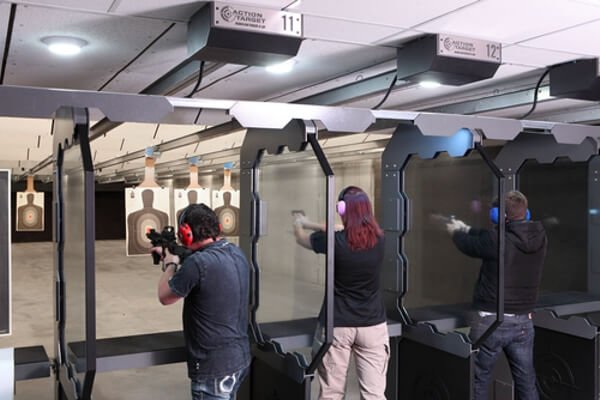Firearm safety isn’t just for those who are shooting for the first time at the local range or who are purchasing their first firearm from their local gun store. Safety is for everyone involved in the shooting sports – from the novice gun store employee to the customer adding one more to the collection. Whether you’re a seasoned shooting professional, a regular customer at the range, a law enforcement officer, an active or retired member of the military, or simply have firearms in your house that you’ve never used, the four foundational rules of firearm safety should act as a “common language” that everyone knows and speaks. But as is the case with most new languages, the language of firearm safety must be studied, learned, and be put into constant practice in order for it become second nature.
Safety with firearms is both an attitude and a choice. Choosing to be safe with firearms results from a prior recognition of the potential harm that firearms have, and safe behaviors are those responses taken in order to reduce or eliminate risk. The attitude of safety does not apply to firearms alone; there are safe driving behaviors needed when operating a motor vehicle, safe procedures for handling sharp knives in the kitchen, and safe practices that need to be observed on the job site. Safety begins with you.
FIREARM SAFETY DEPENDS ON YOU
The first rule: Treat all firearms as if they were loaded and ready to shoot.
The first rule of gun safety sets the stage for interacting with all firearms by describing a very specific state of mind that one must have before, during, and after their involvement with a firearm. We are to treat all firearms as if they were always loaded and ready to shoot. This first rule of gun safety is meant to heighten awareness to the potential consequence of a negligent discharge, and in a effort to prevent such an accident, the rule implores the handler to touch all firearms using utmost caution and care. The handler is to assume that all firearms are always ready to shoot until he or she drops the magazine and racks the slide or bolt to clear the chamber of ammunition or locks open the firearm’s action.
The second rule: Keep all fingers away from the trigger until ready to shoot.
The second rule of gun safety is meant to call specific attention to a firearm’s mechanics. Common firearms such as semi-auto pistols, revolvers, and rifles are engineered pieces of machinery designed to discharge one bullet after one trigger movement; keeping fingers away from the trigger is meant to prevent activating the gun’s firing mechanism. The only time a finger should enter the trigger guard is when the user has intention for the gun to discharge a bullet. And since it is assumed that all firearms are always loaded, placing a finger on the trigger communicates the intention that the user desires the bullet to leave the barrel.
The third rule: Keep the firearm pointed in a safe direction at all times.
The third rule of gun safety is designed to be a fail-safe gun behavior meant to prevent damage or harm in the event that all other firearm safety rules are ignored. When the firearm is always pointed in a safe direction, then no one or nothing should be damaged or hurt during an accidental discharge. Why? Because the firearm is oriented in a manner that the bullet leaving the barrel will not strike an unintentional target. A deeper reading of this rule suggests that the user chooses a target by the mere fact of pointing the gun at something. Others have stated this rule as “never let the muzzle cover anything that you don’t wish to destroy.” Some instructors tell their students to visualize a cutting laser beam always leaving the muzzle – and that if the student points their gun at something, it’s the same as cutting it with a laser.
The fourth rule: Be aware of your target and what is beyond your target.
The fourth rule of gun safety is designed to remind the firearm user that fired bullets have the potential to travel beyond their target. (And what is the target? The target is anything in front of the barrel, regardless if the firearm is loaded or unloaded or if fingers are on or off the trigger.) In other words, there are times when the bullet will not stop traveling even after hitting the target; after the bullet leaves the barrel, the laws of physics take over and the bullet will continue to be in motion until it loses all energy. For example, a bullet will continue to travel unaffected after penetrating a standard paper target from the local gun range. The paper target might have a wood or cardboard support behind it which will also be penetrated by the bullet. In the case of hunting, powerful rifle rounds will hit the target, pass through the target, and continue moving until stopped by either gravity or some other object.
Summary: Most firearm related accidents, otherwise called “negligent discharges,” can usually be traced to a violation of one or more of the four primary gun safety rules. In order to prevent harm to self, others, and equipment, most gun ranges implement and expand upon the four rules of gun safety in their own local business: 1.) Treat all firearms as if they were loaded and ready to shoot. 2.) Keep all fingers away from the trigger until ready to shoot. 3.) Keep the firearm pointed in a safe direction at all times. 4.) Be aware of your target and what is beyond your target.






